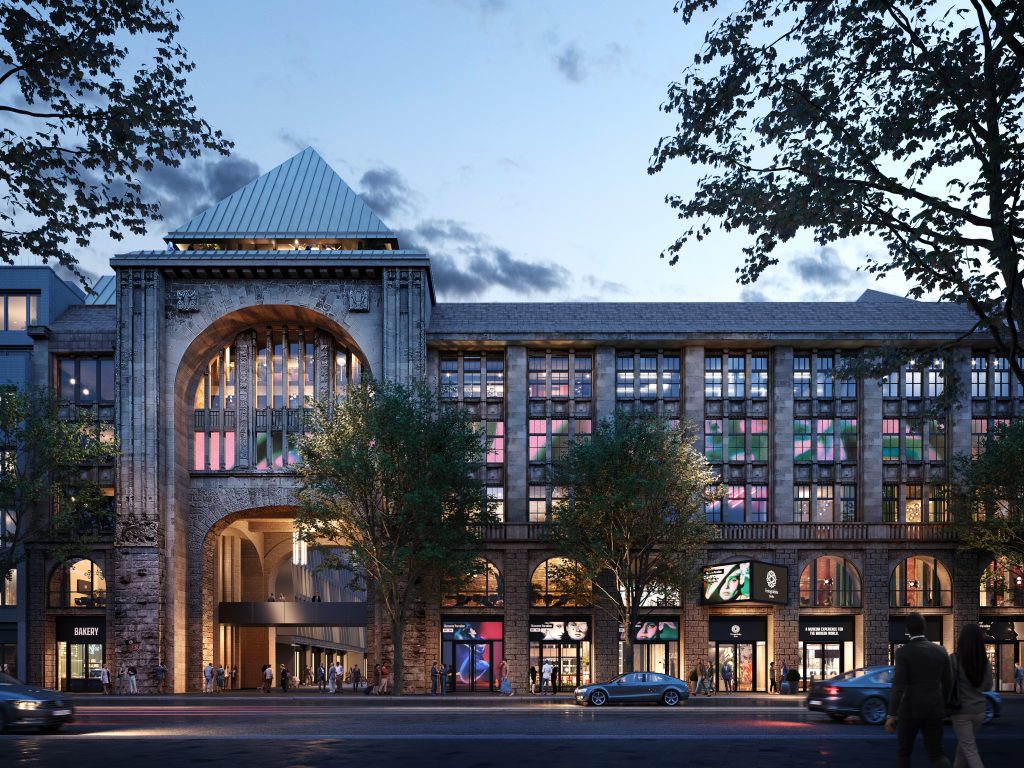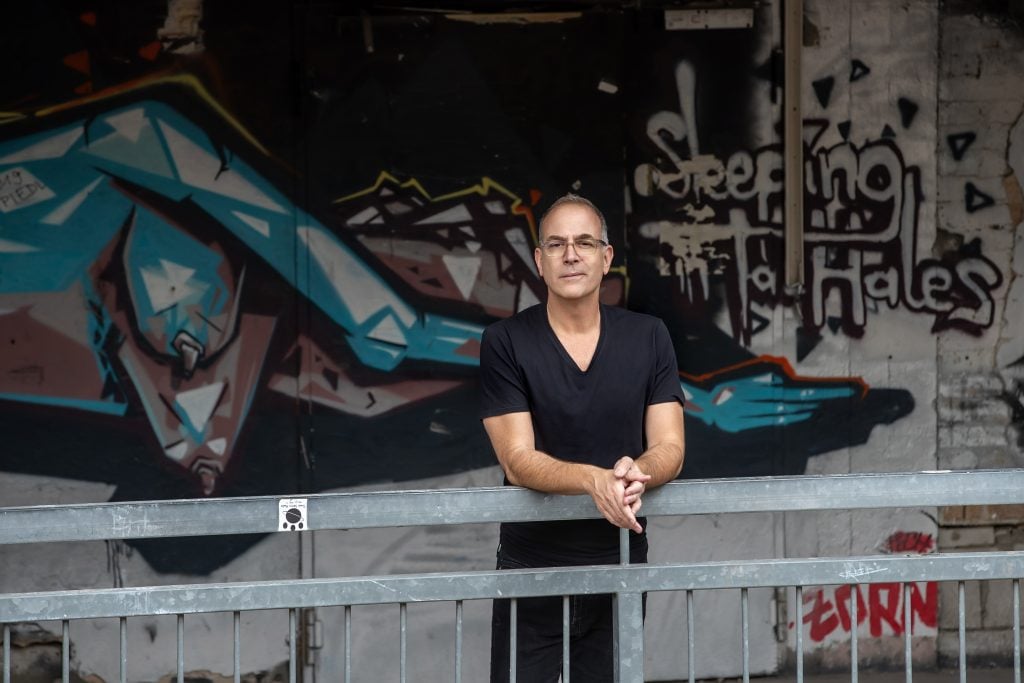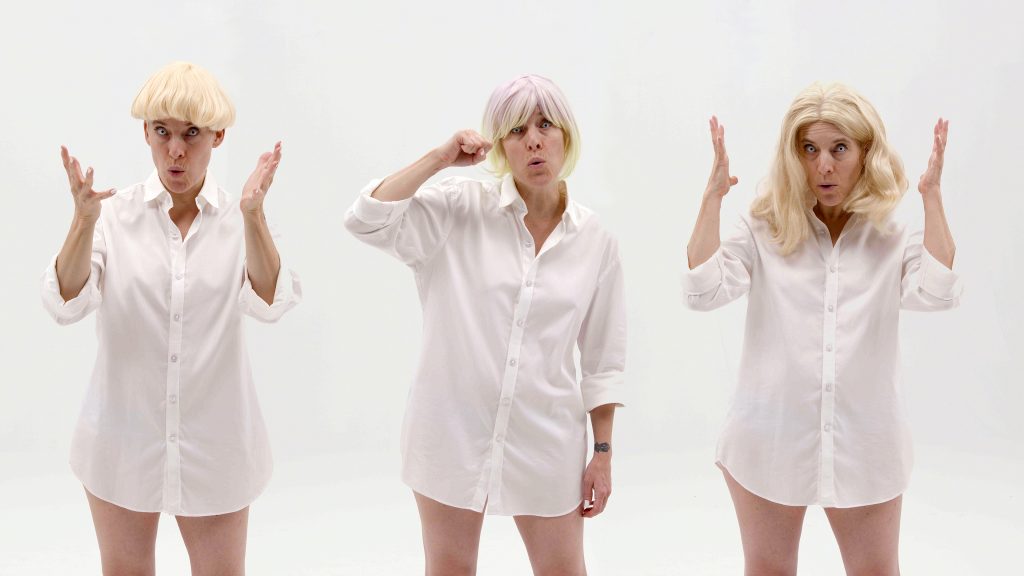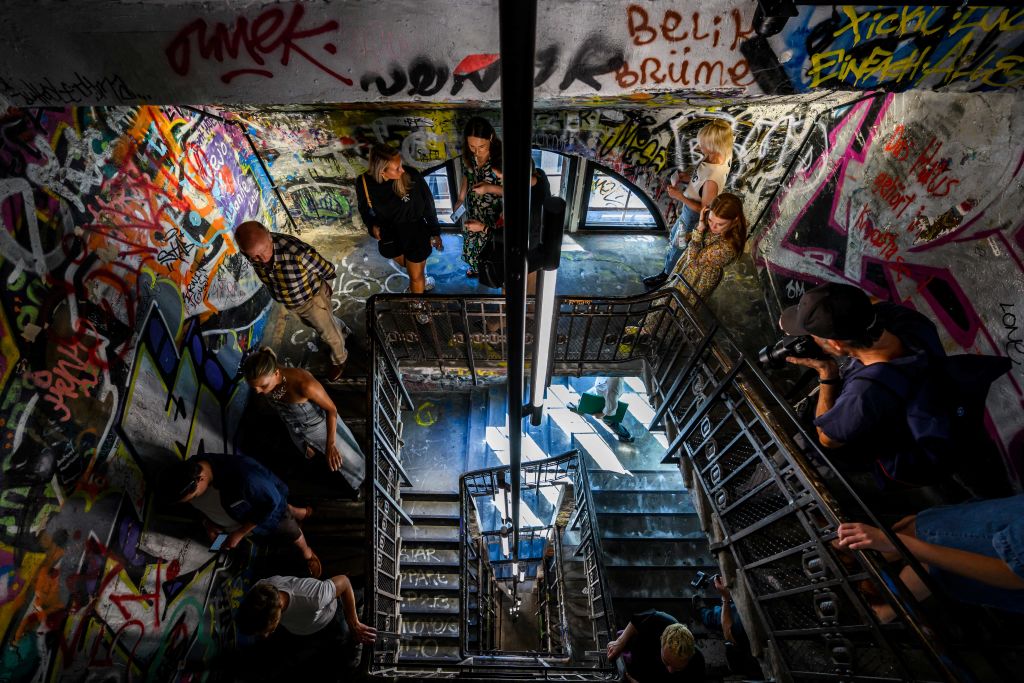Art World
The Maverick, For-Profit Museum Fotografiska Lands in Berlin With a Glitzy Post-Punk Outpost
After a multi-year renovation, the monumental space opens this week with solo exhibitions of work by Juliana Huxtable and Candice Breitz.

After a multi-year renovation, the monumental space opens this week with solo exhibitions of work by Juliana Huxtable and Candice Breitz.

Kate Brown

As construction workers were adjusting the lighting and adding the last layer of paint around the site of Berlin’s newest private museum, a key part of the six-story venue was being ignored. The graffiti-scrawled staircase, with its hard-earned patina of tags, peeling posters, and punk stickers, remained untouched as Fotografiska finished its massive overhaul.
The third outpost of the Fotografiska portfolio finds its home in a Berlin venue whose narrative feels particularly indicative of this city in all its complexity. It was a post-Berlin Wall artist squat and grassroots arts space, and now, amid an influx of creative industries and real estate speculation and investments in the years since, it stands among the new skyline that includes sleek, multipurpose spaces along most city blocks. This site in particular is within a wider complex designed by Herzog and de Meuron that includes luxury apartments, offices, and shops in Mitte, one of Berlin’s most touristic and pricy areas.
“This venue has always been a cultural place, a place for cultural communities,” Yousef Hammoudah, Fotografiska Berlin’s chief executive officer told me as we walked with curator Marina Paulenka. Yoram Roth, chairman of Fotografiska’s Group of Museums, who is an entrepreneur, photographer, and collector, was leading the way out of a large group show featuring only female-identifying artists focused on the many conceptions of the nude figure to a skylit attic space, where Berlin-based artist and activist Candice Breitz is subject of a solo exhibition. New York artist and nightlife icon Juliana Huxtable is also having her first large-scale solo show here, as part of a glittering unveiling planned for September 14, timed to the city-wide Berlin Art Week. It is Fotografiska’s fourth space to come, after Stockholm, Tallinn, New York.

Yoram Roth at Fotografiska Berlin. Courtesy Fotografiska
Unlike other cultural institutions, private or public, Fotografiska’s unique offering is that it is open until 11 p.m.; they are a one-stop place for people to see art while hanging out with a glass of wine in hand (even if it is not an opening). Off each of those gritty staircases and hallways, beyond the several large-scale exhibition areas, are bars, a bakery, a cafe, lounge areas, a dance floor and stage, and a gift shop: the idea is to meld seeing approachable art while socializing, eating, drinking, and dancing. And, Roth added as we swept around another corner, the museums are apparently great for “Bumble dates.”
“We are very serious about being here for the community and exhibiting the artists that are in this community,” said Roth of the programming, which takes an expanded view of the medium of photography. Other locations have shown artists like Tom of Finland, Andy Warhol, or Annie Leibovitz, as well shows of more emerging talents.
The concept is not guesswork. Their New York outpost, which opened in 2020 has had success with this approach of catering to the booming experience economy. Though some may question whether it fits the traditional museum definition, it is nevertheless viable for creating footfall in a post-lockdown cultural sphere that is rapidly moving online. The New York location had more than 400,00 visitors last year.

Candice Breitz. Still from Whiteface. Commissioned by the Museum Folkwang with the support of the Kunsthalle Baden Baden
For their opening weekend in Berlin, a series of talks with exhibiting artists, including Breitz and Huxtable, are already sold out. The venue’s grand ballroom—with its early 20th century splendour and late 20th century signs of decay in perfect tandem—will host a show by musician Peaches, who once had a studio at the former venue, called Am Tacheles. (Artists were evicted in 2012 and, in order to redevelop the site, culture had to be part of the offering.) There will be also be a performance by Huxtable. “Music and dance and culture, beyond fine art, has always been a part of Fotografiska’s DNA,” said Roth.
In that sense, too, Fotografiska is the sum of Roth’s talents and interests. He studied photography and ran a record label before taking up the family real estate business. His private arts club Neuehouse merged with Fotografiska in 2021, to form CultureWorks. Pretty soon, the sun will not set on the Fotografiska brand of museums; there are plans to open another outpost in Shanghai before the 2023.
Roth explained that the for-profit venue takes up opportunities in a middle zone between public institutions and commercial galleries. No art is being sold here, like a museum, but, more like a gallery, revenue and bottom lines matter. “The primary ways we have seen [cultural institutions run] over the last decades has been either a reliance on government funding and grants or on charitable contributions from large corporations or wealthy individuals,” he said.

Visitors walk down a stairwell decorated with graffiti during a press preview at the Fotografiska photography museum, housed in the former art squat “Kunsthaus Tacheles” in Berlin on September 7, 2023. The Fotografiska museum will open its doors to the public on September 14, 2023. (Photo by John MacDougall/ AFP via Getty Images)
Roth is passionate about what he calls “a third way,” that requires neither a reliance on government funding nor on a constant inflow of individual donations. “We need to take a look towards covering our costs at the end of each year.” In making the project profitable, Roth said working to create something with a broader appeal is key. They’re hoping to welcome around 300,000 people per year to the venue in 2024.
“There is also a third place that we need to think about,” said Roth. “There is home, there is your place of work. And there used to be church or some kind of community [center]. I think people are really seeking that third place. More and more we are seeing the rise of membership communities.”
There is no mention of the New York style multi-level membership program quite yet for the Berlin space as it eases into a city that struggles with a rapidly rising cost of living. For now, during the weekdays visitors pay 14 euros per visit, a competitive price that matches the costs to enter Berlin’s Neue Nationalgalerie’s permanent exhibitions. On the weekends, the price goes up to 16 euros.
Roth describes the ideal demographic as anyone who is “culturally curious,” adding that photography helps to that end as it is “not as exclusive as contemporary art, which can feel purposefully opaque and intimidating. Photography is the first medium where people feel they can have an opinion.”
Fotografiska opens in Berlin on Thursday, September 14.